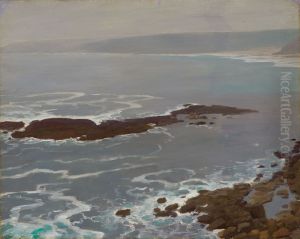Harold Knight Paintings
Harold Knight was an English painter who was born on 28 January 1874 in Nottinghamshire, England. He was known for his realistic and sensitive portrayal of domestic scenes and portraits, particularly of women and children. Harold was married to fellow artist Dame Laura Knight, who was also a significant figure in British art.
Knight studied art at the Nottingham School of Art, where he met Laura Johnson (later Laura Knight), and they married in 1903. The couple became involved with the artists' colony in Newlyn, Cornwall, which had a profound influence on their work. The Newlyn School was known for its naturalistic and plein-air paintings, and Knight's style was greatly affected by the ethos of the colony.
In 1907, Harold and Laura moved to Yorkshire, where they continued to paint rural scenes and portraits. Knight's work during this period often reflected the quiet, intimate moments of country life. He was adept at capturing the subtle nuances of light and the textures of fabrics in his paintings, which gave a sense of warmth and depth to his subjects.
During World War I, Harold Knight's career was somewhat overshadowed by that of his wife, who received commissions to paint war-related subjects. Nevertheless, Harold continued to paint, focusing on portraits and interior scenes.
After the war, the Knights moved back to Cornwall and later to London, where Harold's reputation as a portrait painter grew. He was elected to the Royal Academy of Arts in 1937, and his works were exhibited widely in Britain. Throughout his career, Knight avoided the limelight and preferred to let his paintings speak for themselves.
Harold Knight passed away on 3 October 1961. His legacy endures through his sensitive and evocative paintings that capture the serene and contemplative aspects of everyday life. His works are held in various collections, including the Tate Gallery in London and the National Portrait Gallery.
